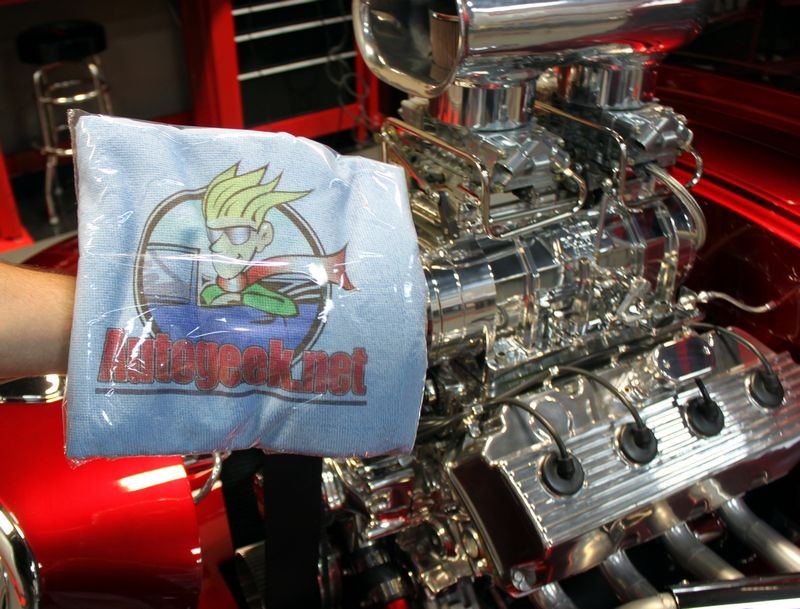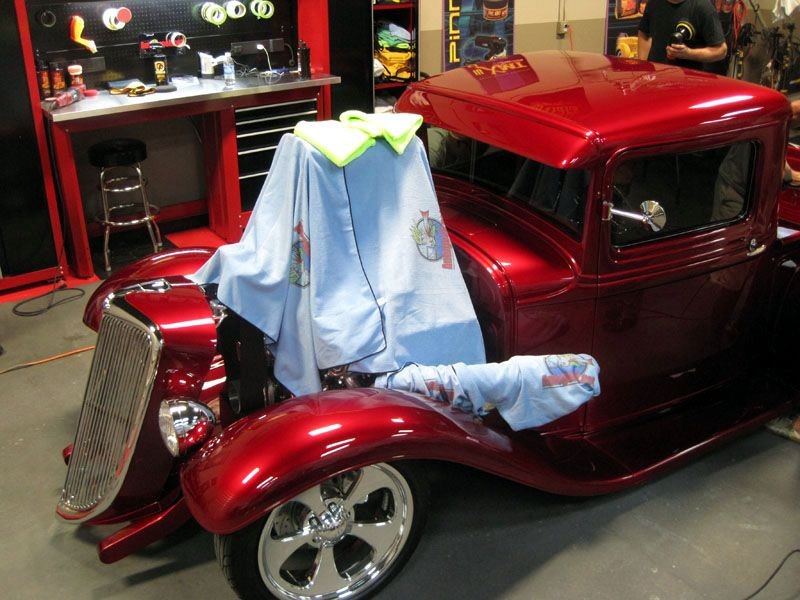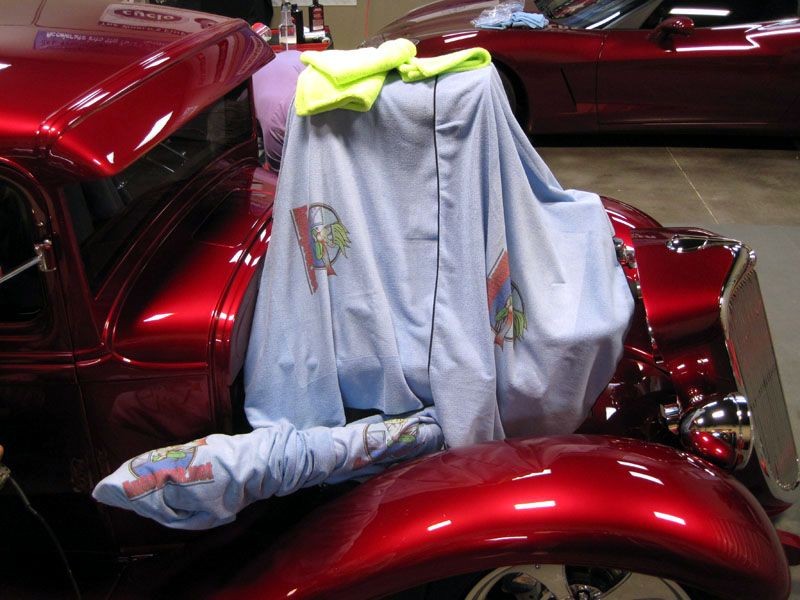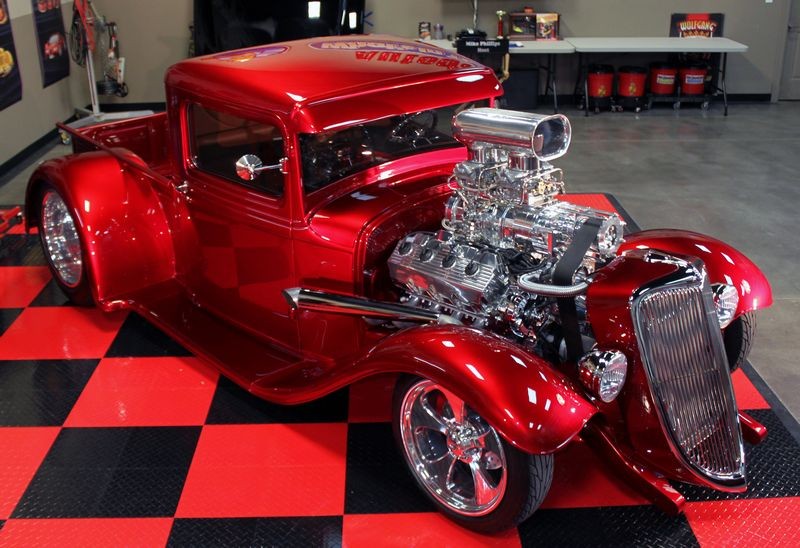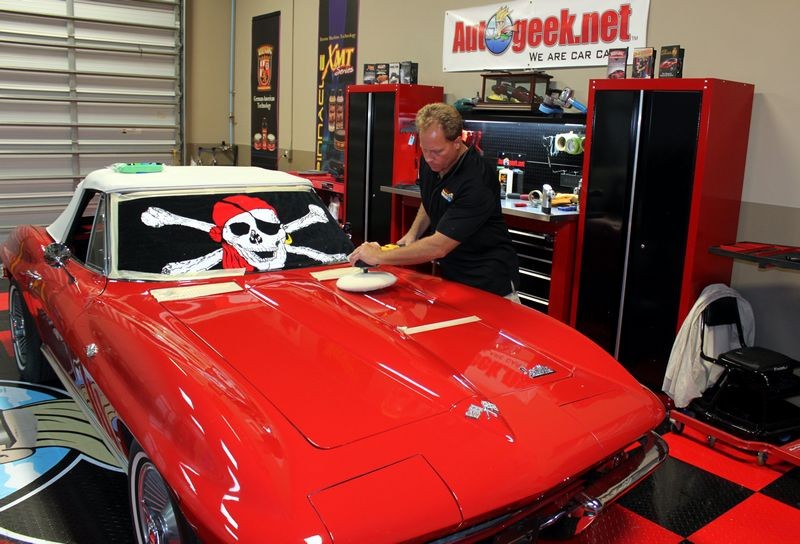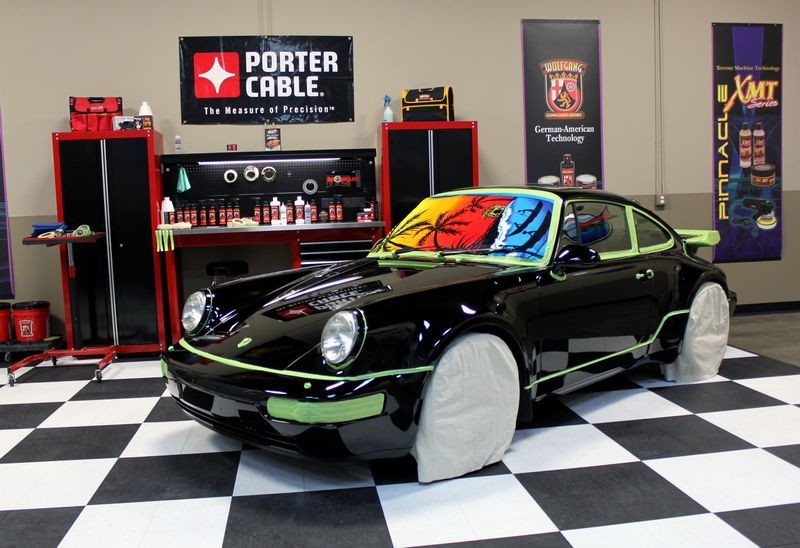Mike Phillips
Active member
- Dec 5, 2022
- 51,004
- 6
The Beach Towel Tip
Here's a tip I use on some cars I detail to cover and protect the plastic surrounding the wiper arms at the back edge of the hood of cars, just before the windshield.
Beach Towels tend to be longer in one direction than the average bath towel; on average, beach towels run around 60" or 70" in length. Where this comes in handy over a bath towel is that your average car, truck or s.u.v. windshield is around 5' to 6' across so a Beach Towel is usually long enough to cover and protect the plastic, wiper arms, and glass in one fell swoop whereas the average bath towel falls short.
See if you can relate...
Sometimes it seems like splatter, that is the little white dots of product that land on the glass can be some of the hardest little things to remove 100%, not to mention time-consuming. So with this technique you can avoid the hassle entirely.
This tip is mostly for working with rotary buffers as they will tend to sling-out splatter more than machines like the Flex 3401, the Cyclo and DA Polishers like the Porter Cable.
I have seen people lift these other non-rotary buffers off hoods while the pad is still spinning at a high rate of speed and completely cover a windshield with splatter so it does happen. See these threads,
Here's a tip... don't lift the pad off the paint till you've turned the polisher off and the spinning pad has slowed down...
What not to do when detailing a car!
I know detailers that never tape-off or cover anything up and that's okay too, it's personal preference and it could be that you're just incredibly careful as well as incredibly good at this craft. It could also mean the cars you're working on it won't matter if you do get spatter into hard to detail areas.
For the rest us, here's how you use a Beach Towel to cover-up and protect areas you don't want to get splatter onto or into and then have to "detail" these areas and components later, after the polishing and waxing is over.
This is a stylish Beach Towel I found at Walgreens for around $6.00, my normal towel is white and ugly so I thought this would make for a more fun how-to article. Just to note you could also use paper or plastic, whatever works for you... I like Beach Towels for a number of reasons that paper and plastic don't offer but I have used both plastic, (2 mil painter's drop cloths), and paper, (usually newspaper but painter's masking paper works great too).

Here's the area I'm talking about that you want to cover up on modern cars, they often have plastic material with grill or vent openings that if you get splatter onto and into these areas it can be difficult and time consuming to remove.
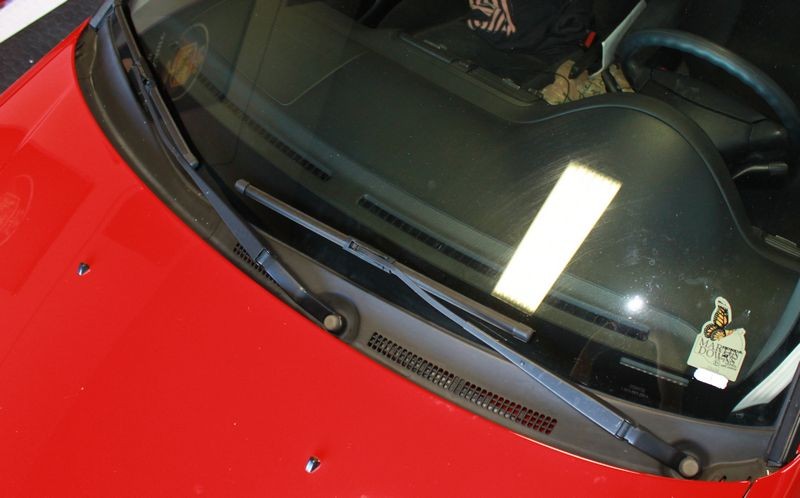
In most cases, if you're restoring the paint on someone's daily driver, not only is the paint neglected but the plastic is neglected meaning it's weathered, dried and dull and it seems like splatter really likes to stick hard to plastic in this condition.
If you do get splatter on these areas, it's also very unsightly and your customer might not appreciate it if you don't remove it. So with this technique, you never get splatter into and onto these areas in the first place. The old an ounce of prevention idea...

Not only does a Beach Towel work well for this type of job you can also re-wash it and use it again... so it's green technique...
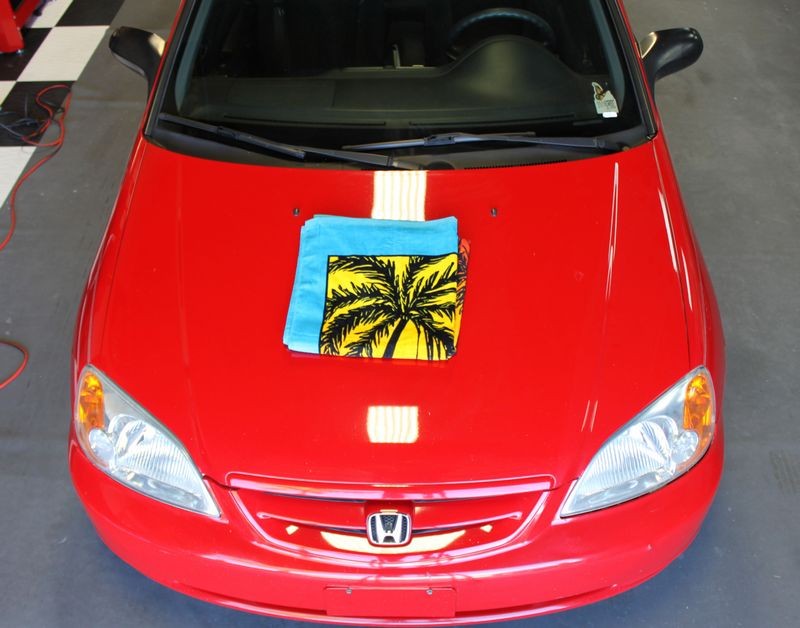
Start by opening the hood and locating a place to tape one edge of the towel too, make sure the ends of the towel don't bind in the hinge mechanism and don't place dry cloth anywhere on a hot engine where it could be a fire danger or get caught into any moving parts. In other words, use common sense.
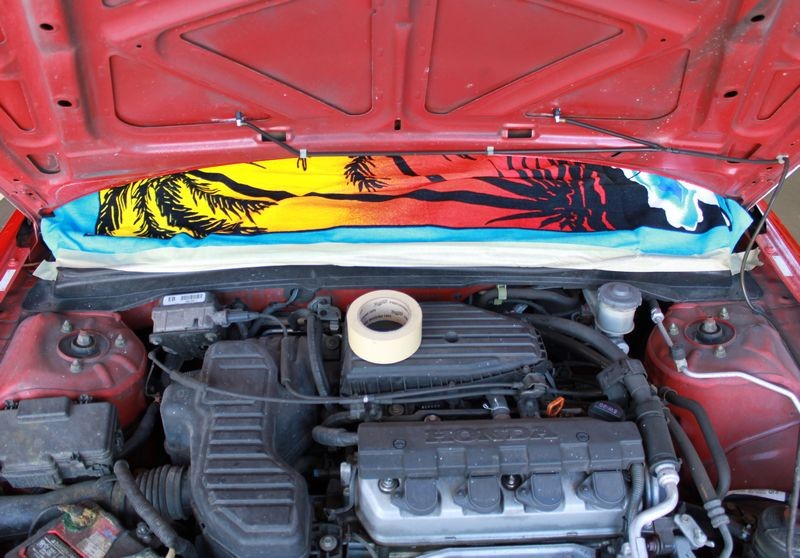
After carefully closing the hood, then use some Painter's Tape to affix the towel to the windshield so it doesn't fall down and if you're also taping off other plastic, vinyl or rubber trim, then tape-off these components accordingly.

In this instance the towel did not reach all the way to the top of the windshield; this is okay however because the sling and splatter is mostly an issue for the lower portions adjacent to the hood where the buffing is taking place. You can also use this for the rear window. Side windows are not usually a problem for the glass because the panels are vertical.

Notice how I've run a couple of strips of wide tape along where the Beach Towel meets the rear edge of the hood?


In some cases, the design of the vehicle means there's no gap or air space between the edge of the hood and the glass or wiper arm area, in these cases, you have to be careful when running your polisher not to run the buffing pad into the Beach Towel because the nap is grippy and your buffing pad could grab it and yank it into itself.
So for cars with a low or no air-gap between the paint and the area you're trying to cover up, being careful when buffing these areas is important, but I also run a couple of strips of tape across this area as a buffing pad that's lubricated with product will just bump into the tape, it won't snag it and possibly pull it off the area and into the pad.
Just an extra safety precaution, you can decide how DO or AR you want to get.
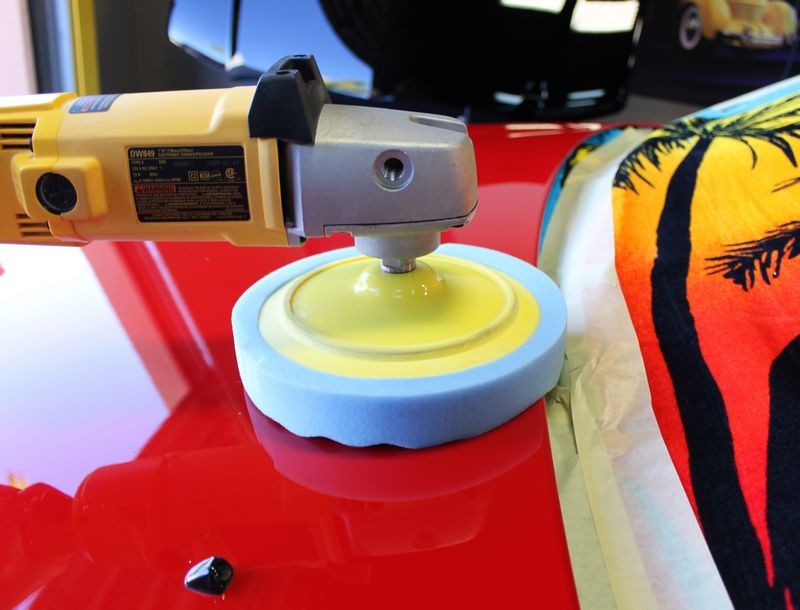
Then continue working around the car taping areas off you don't want to get compound or polish residue.

Classic and Antique Vehicles
For classic cars, there's usually zero plastic around the windshield, wiper arms and edge of hood but you may still want to cover-up the windshield glass so you can use the Beach Towel Tip for classics too...
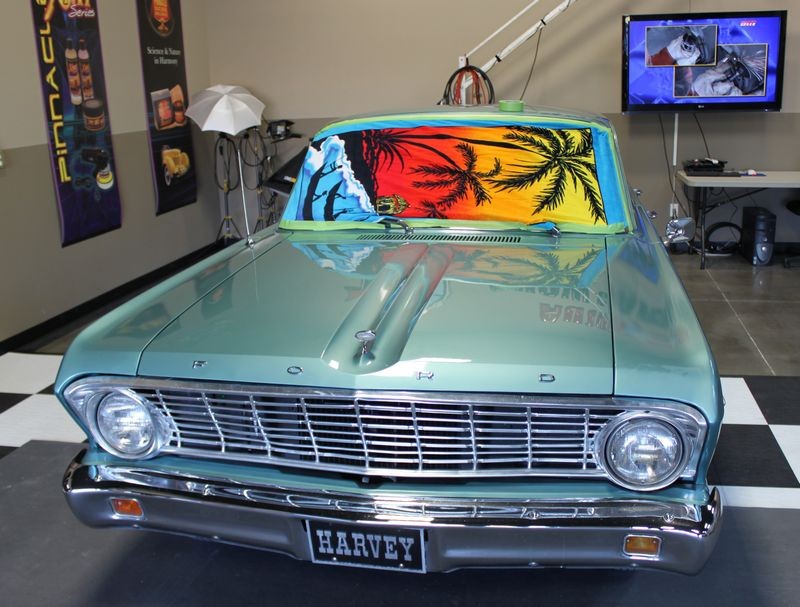
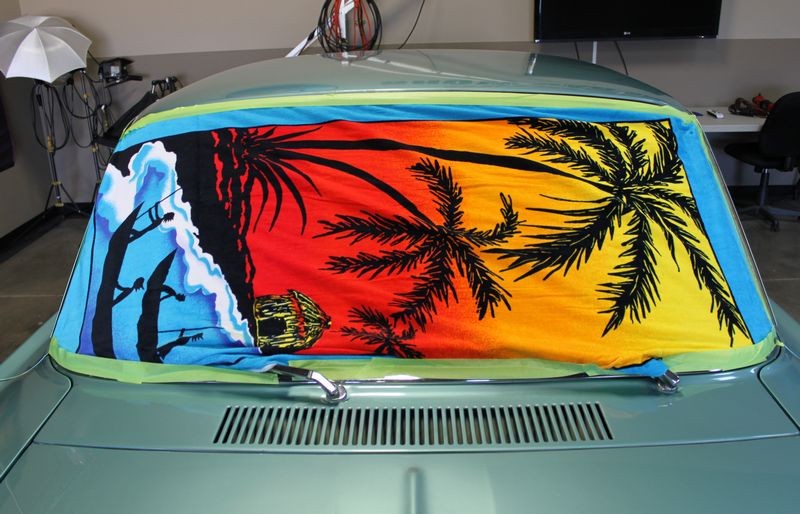
And of course... since most classics have air vent grills in front of the windshield, so Tape it off and avoid a lifetime of ugly...
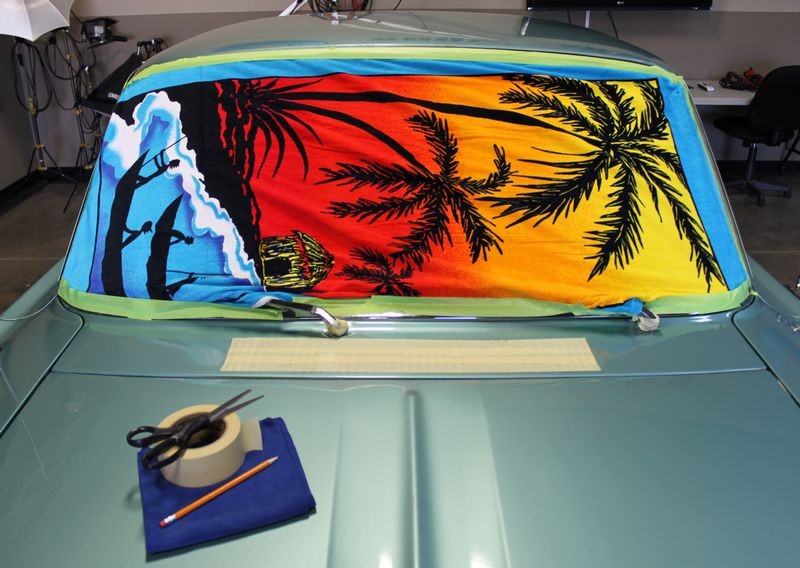
And any other areas that you don't want to run a toothbrush or some kind of detailing brush...
"Polishing paint is polishing paint, detailing is getting the wax out of the cracks"
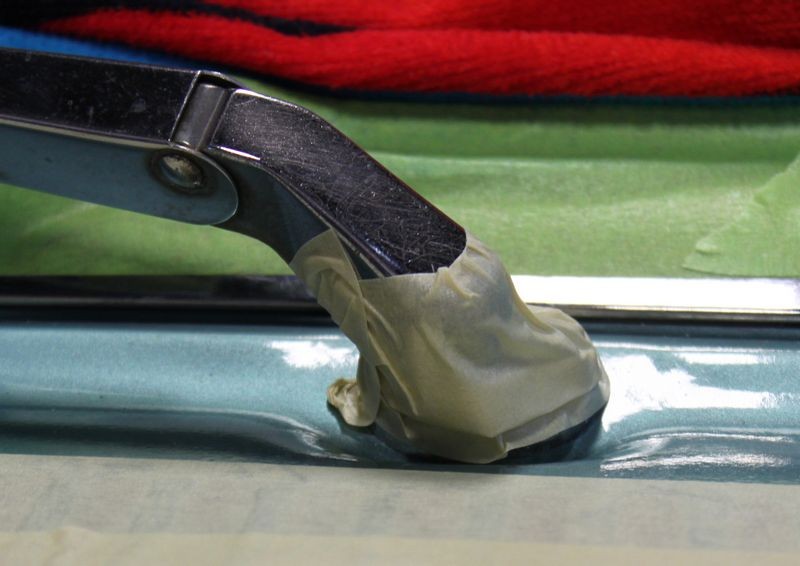
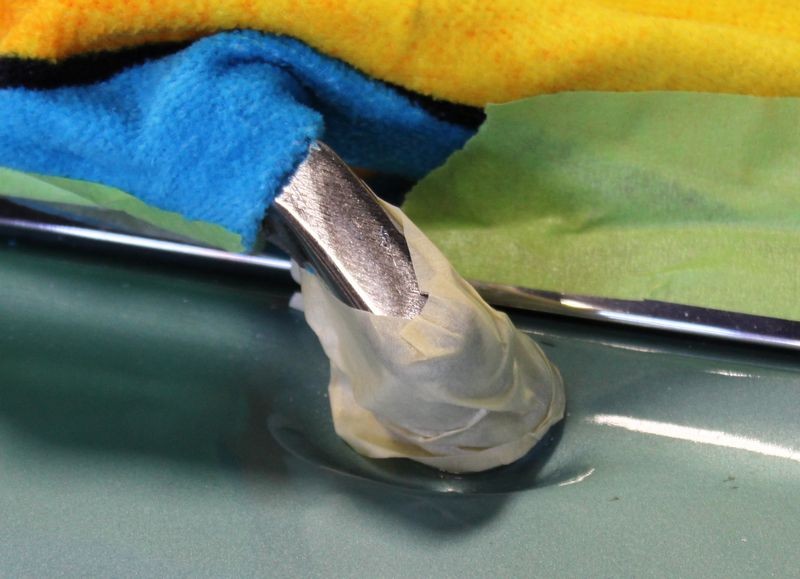
I've also used the extra large Guzzler Waffle Weave Drying Towels and while not always long enough to reach across 100% of a windshield, they do work as you can see in this thread,
Damp-Sanding Tools, Tips and Techniques by Mike Phillips
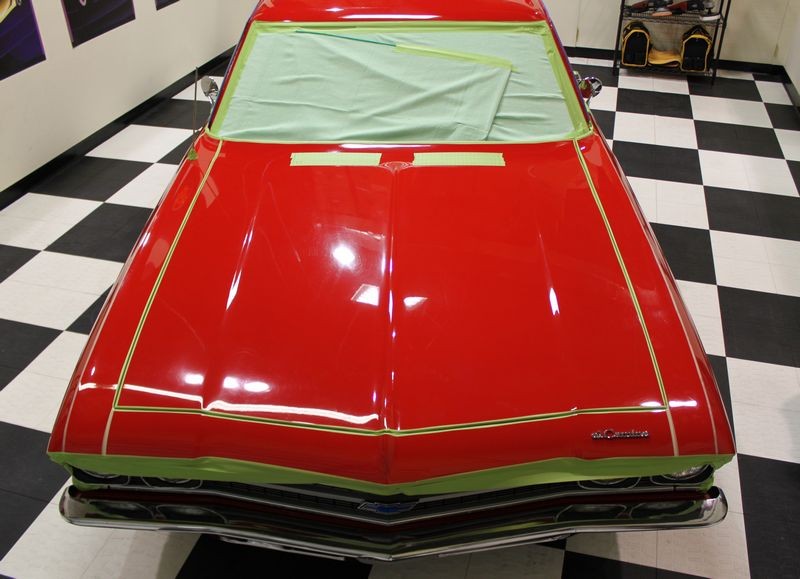
The Beach Towel Tip... simple and effective plus a real time saver...
On the Autogeek.net Store
Meguiars Professional Masking Tape Combo
3M Automotive Performance Masking Tape 3 Pack
The Ultimate Guzzler Waffle Weave By Cobra 28 x 44 inches
Here's a tip I use on some cars I detail to cover and protect the plastic surrounding the wiper arms at the back edge of the hood of cars, just before the windshield.
Beach Towels tend to be longer in one direction than the average bath towel; on average, beach towels run around 60" or 70" in length. Where this comes in handy over a bath towel is that your average car, truck or s.u.v. windshield is around 5' to 6' across so a Beach Towel is usually long enough to cover and protect the plastic, wiper arms, and glass in one fell swoop whereas the average bath towel falls short.
See if you can relate...
Sometimes it seems like splatter, that is the little white dots of product that land on the glass can be some of the hardest little things to remove 100%, not to mention time-consuming. So with this technique you can avoid the hassle entirely.
This tip is mostly for working with rotary buffers as they will tend to sling-out splatter more than machines like the Flex 3401, the Cyclo and DA Polishers like the Porter Cable.
I have seen people lift these other non-rotary buffers off hoods while the pad is still spinning at a high rate of speed and completely cover a windshield with splatter so it does happen. See these threads,
Here's a tip... don't lift the pad off the paint till you've turned the polisher off and the spinning pad has slowed down...
What not to do when detailing a car!
I know detailers that never tape-off or cover anything up and that's okay too, it's personal preference and it could be that you're just incredibly careful as well as incredibly good at this craft. It could also mean the cars you're working on it won't matter if you do get spatter into hard to detail areas.
For the rest us, here's how you use a Beach Towel to cover-up and protect areas you don't want to get splatter onto or into and then have to "detail" these areas and components later, after the polishing and waxing is over.
This is a stylish Beach Towel I found at Walgreens for around $6.00, my normal towel is white and ugly so I thought this would make for a more fun how-to article. Just to note you could also use paper or plastic, whatever works for you... I like Beach Towels for a number of reasons that paper and plastic don't offer but I have used both plastic, (2 mil painter's drop cloths), and paper, (usually newspaper but painter's masking paper works great too).

Here's the area I'm talking about that you want to cover up on modern cars, they often have plastic material with grill or vent openings that if you get splatter onto and into these areas it can be difficult and time consuming to remove.

In most cases, if you're restoring the paint on someone's daily driver, not only is the paint neglected but the plastic is neglected meaning it's weathered, dried and dull and it seems like splatter really likes to stick hard to plastic in this condition.
If you do get splatter on these areas, it's also very unsightly and your customer might not appreciate it if you don't remove it. So with this technique, you never get splatter into and onto these areas in the first place. The old an ounce of prevention idea...

Not only does a Beach Towel work well for this type of job you can also re-wash it and use it again... so it's green technique...

Start by opening the hood and locating a place to tape one edge of the towel too, make sure the ends of the towel don't bind in the hinge mechanism and don't place dry cloth anywhere on a hot engine where it could be a fire danger or get caught into any moving parts. In other words, use common sense.

After carefully closing the hood, then use some Painter's Tape to affix the towel to the windshield so it doesn't fall down and if you're also taping off other plastic, vinyl or rubber trim, then tape-off these components accordingly.

In this instance the towel did not reach all the way to the top of the windshield; this is okay however because the sling and splatter is mostly an issue for the lower portions adjacent to the hood where the buffing is taking place. You can also use this for the rear window. Side windows are not usually a problem for the glass because the panels are vertical.

Notice how I've run a couple of strips of wide tape along where the Beach Towel meets the rear edge of the hood?


In some cases, the design of the vehicle means there's no gap or air space between the edge of the hood and the glass or wiper arm area, in these cases, you have to be careful when running your polisher not to run the buffing pad into the Beach Towel because the nap is grippy and your buffing pad could grab it and yank it into itself.
So for cars with a low or no air-gap between the paint and the area you're trying to cover up, being careful when buffing these areas is important, but I also run a couple of strips of tape across this area as a buffing pad that's lubricated with product will just bump into the tape, it won't snag it and possibly pull it off the area and into the pad.
Just an extra safety precaution, you can decide how DO or AR you want to get.

Then continue working around the car taping areas off you don't want to get compound or polish residue.

Classic and Antique Vehicles
For classic cars, there's usually zero plastic around the windshield, wiper arms and edge of hood but you may still want to cover-up the windshield glass so you can use the Beach Towel Tip for classics too...


And of course... since most classics have air vent grills in front of the windshield, so Tape it off and avoid a lifetime of ugly...

And any other areas that you don't want to run a toothbrush or some kind of detailing brush...
"Polishing paint is polishing paint, detailing is getting the wax out of the cracks"


I've also used the extra large Guzzler Waffle Weave Drying Towels and while not always long enough to reach across 100% of a windshield, they do work as you can see in this thread,
Damp-Sanding Tools, Tips and Techniques by Mike Phillips

The Beach Towel Tip... simple and effective plus a real time saver...
On the Autogeek.net Store
Meguiars Professional Masking Tape Combo
3M Automotive Performance Masking Tape 3 Pack
The Ultimate Guzzler Waffle Weave By Cobra 28 x 44 inches












